Teotihuacan – Mexico’s Great Pre-Columbian City
In preparing for this post I reviewed about a dozen other websites to determine what was considered either the best or the most important tourist attraction in Mexico. The consensus came down quite strongly in favour of Teotihuacan among those sites that were mostly focused on history and culture and not on the hedonism of places like Cancun and Cabo. The one I agreed with most was this post from Touropia which lists Teotihuacan as the #1 tourist attraction in Mexico along with seven others we have or will visit on this Adventures Abroad trip through Central Mexico with veteran guide Victor Romagnoli. Looking back on the trip, I have to agree that Teotihuacan was the most interesting site we visited on the trip. Join me in touring this once grand city and I’ll tell you why.
For the past few days we have been staying in the heart of the great colonial city of Puebla which we have used as a base to view the murals of Cacaxtla and the great pyramid of Cholula among other sites. This morning we head north on the Pan-American highway, skirting Mexico City to the west for the small city of San Juan Teotihuacan about two hours away. The highways in Mexico have been generally excellent and without the scourge of a Canadian winter, they are basically free of the potholes that are a rite of spring back home.
History of Teotihuacan
Even though Teotihuacan is not that far from the Mexica (Aztec) capital of Tenochtitlán, the two cultures were almost a millenia apart in time, but amazing similar in beliefs and culture. In fact the name Teotihuacan is Nahuatl, the language of the Mexicas and means something like ‘Birthplace of the Gods’ – nobody knows what its actual name was. By the time the Mexicas rose to power, Teotihuacan had been destroyed for many hundreds of years, and yet many of the things the Spanish found repulsive in the Mexicas like human sacrifice, animal worship and belief in the demi-god Queztalcoatl, all existed at Teotihuacan. At one time the largest city in the New World at between 125,000 and 150,000 residents it completely vanished from history after a massive fire destroyed most of the public buildings between 600 and 700 A.D. Like the name, nobody knows why it was burnt or by who. It remains one of the great mysteries of modern archaeology.
Founded sometime around 200 B.C.E., another mystery surrounds the people who built and ruled Teotihuacan for its 800 year existence. What is known is that the city was in effect, the Rome of pre-Columbian Mexico. It was a manufacturing center that drew artisans from all over Meso-America with distinct barrios for Mayans and other non-natives who were drawn to the city because of its size and power. To use another tired analogy, if you could make it in Teotihuacan, you could make it anywhere. Ideas and architectural styles emanated from Teotihuacan throughout the Mayan cities of the south, well into Guatemala, Honduras and Belize. It is now a fairly well accepted theory that Teotihuacan was the first city in the New World to create the idea of a city state and that it was the model that was emulated by many later cultures.
The city was never completely lost in time like the Mayan cities that became overgrown and as noted was well known to the Mexicas as well as the Toltecs, Mayans and other later cultures. Archaeological efforts to explore and restore the grand pyramids began as far back as the 1600’s. The Great Pyramid of the Sun was rebuilt, inaccurately it turns out, for the 100th anniversary of Mexican independence in 1910 and has been a great tourist draw ever since. Archaeological work continues to this day and will for the foreseeable future. Teotihuacan is a place of great secrets and mysteries and will always be a magnet for archaeologists wanting to make the next great discovery.
In 1987 it was granted status as a UNESCO World Heritage Site.
Visiting Teotihuacan
Unlike the previous pre-Columbian sites outside of Mexico City we have visited that have been virtually devoid of tourists, I fully expected that Teotihuacan would be overrun with tourists. To a certain extent it was, but the site is so immense that it can easily accommodate hundreds of visitors without seeming crowded. After Victor bought our admission tickets we met our local guide, a pleasant young woman who spoke decent English and gave us much of the background above, although in truth, Victor probably knew as much about the place from his numerous previous visits and encyclopaedic knowledge of all things Mexican.
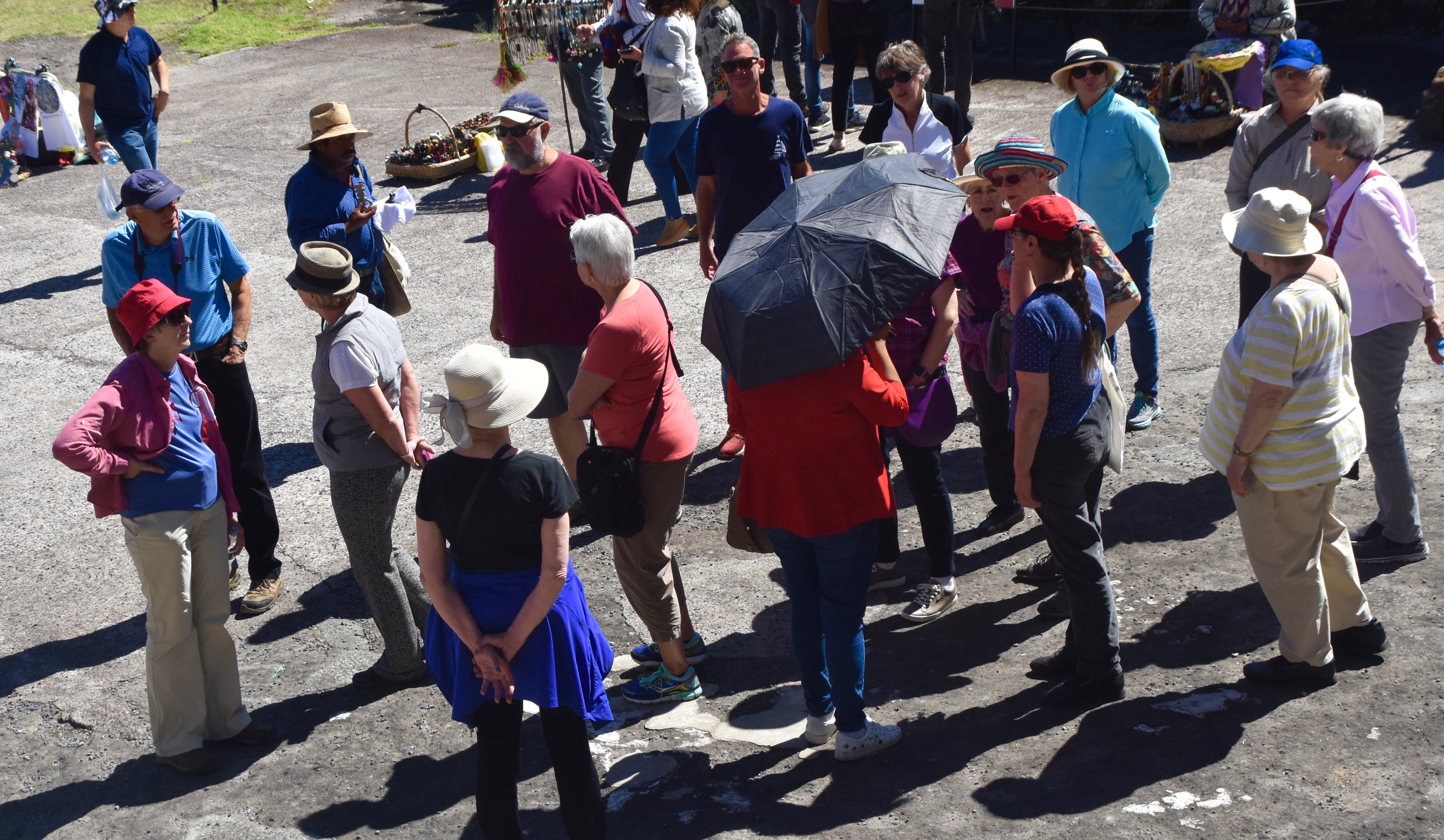
There are four main sites and many, many minor ones that could easily occupy a visitor for days, but we have half a day so on this first visit I’ll stick to the big four plus one.
Avenue of the Dead
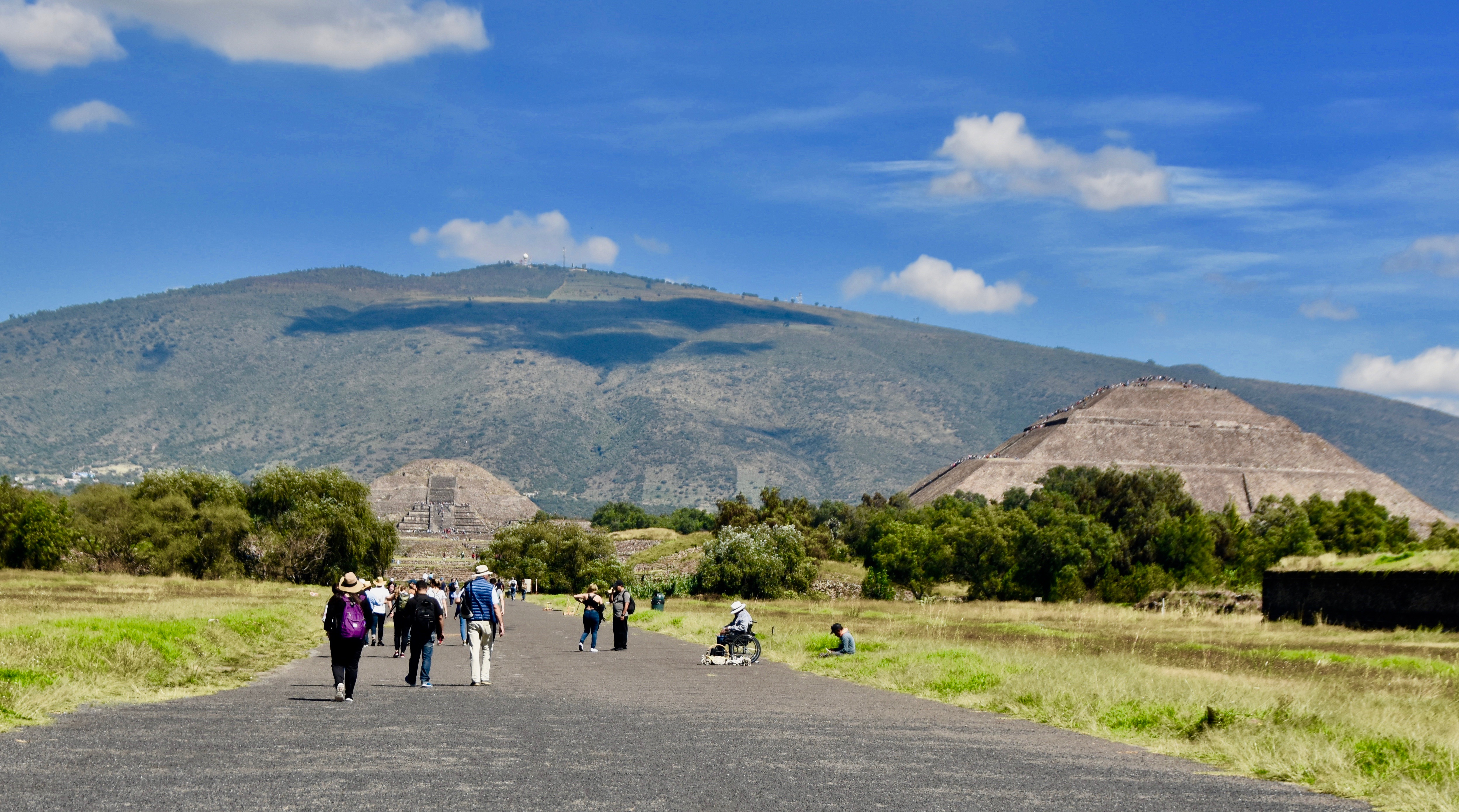
The city is laid out in a grid pattern with one main thoroughfare dividing it in half. The Avenue of the Dead runs for more than two miles, ending at the Pyramid of the Moon. As you can see, it’s really not that crowded and it was a beautiful day to visit a site as famous as this. Just outside the complex there are rows of vendors selling mostly crap, but some do have some decent wares to sell. Inside there are individual hawkers who are all selling fake crap. They are a persistent nuisance, but nowhere in the hall of fame class of Egyptian hucksters.
Pyramid of Queztalcoatl
There are three major pyramids at Teotihuacan of which the Pyramid of Queztalcoatl aka The Pyramid of the Feathered Serpent, is the smallest, but maybe the most intriguing. It’s near the southern end of the Avenue of the Dead and would be to my direct right if standing where the above photo was taken. For some reason, late in the city’s history they built a structure called the Adosada platform that makes getting a good photo of this pyramid difficult.
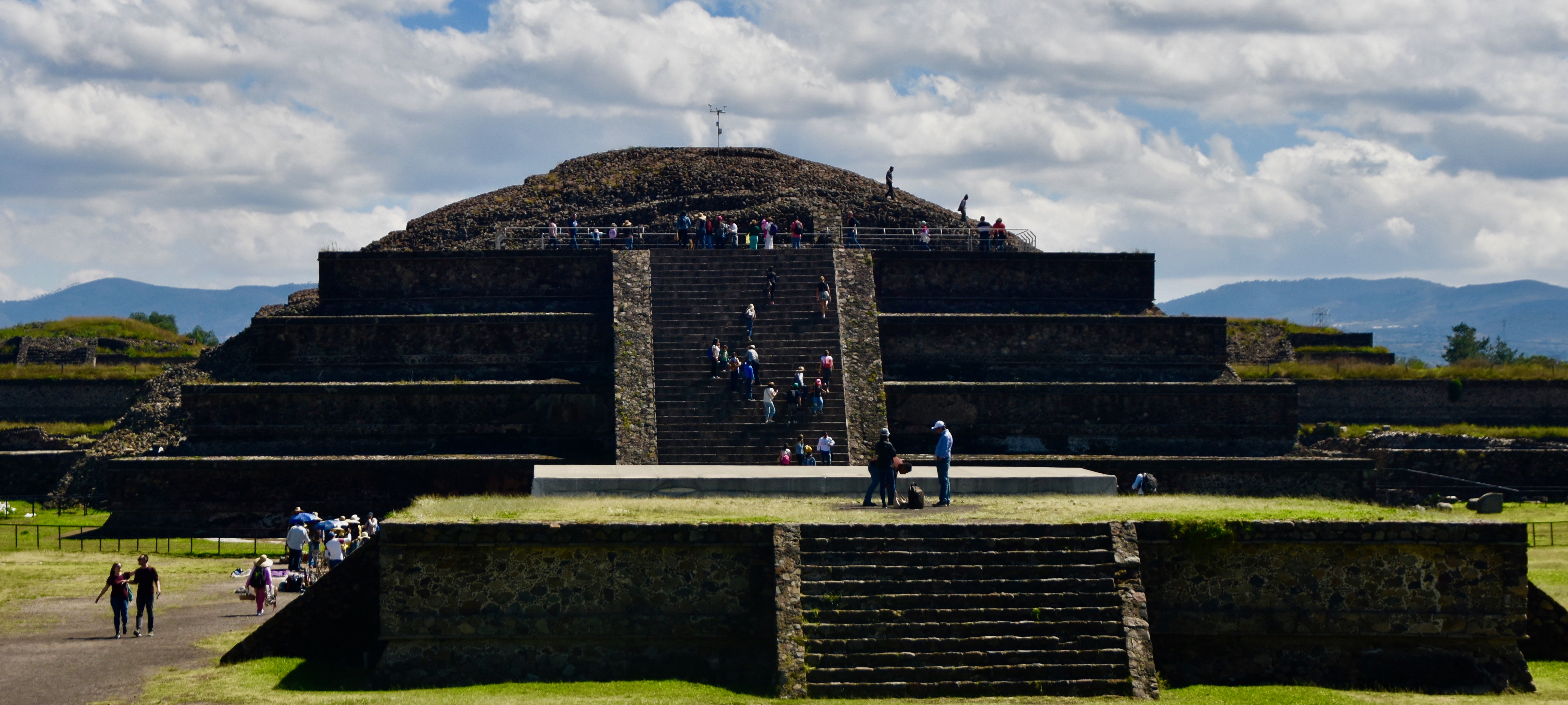
This pyramid was built between 150 and 200 AD based upon finds made inside it, including over 200 human sacrifices found in 1980. The outside of the pyramid was once decorated with hundreds of representations of the Feathered Serpent God, but today only a few remain. They are best observed from the side of the pyramid.
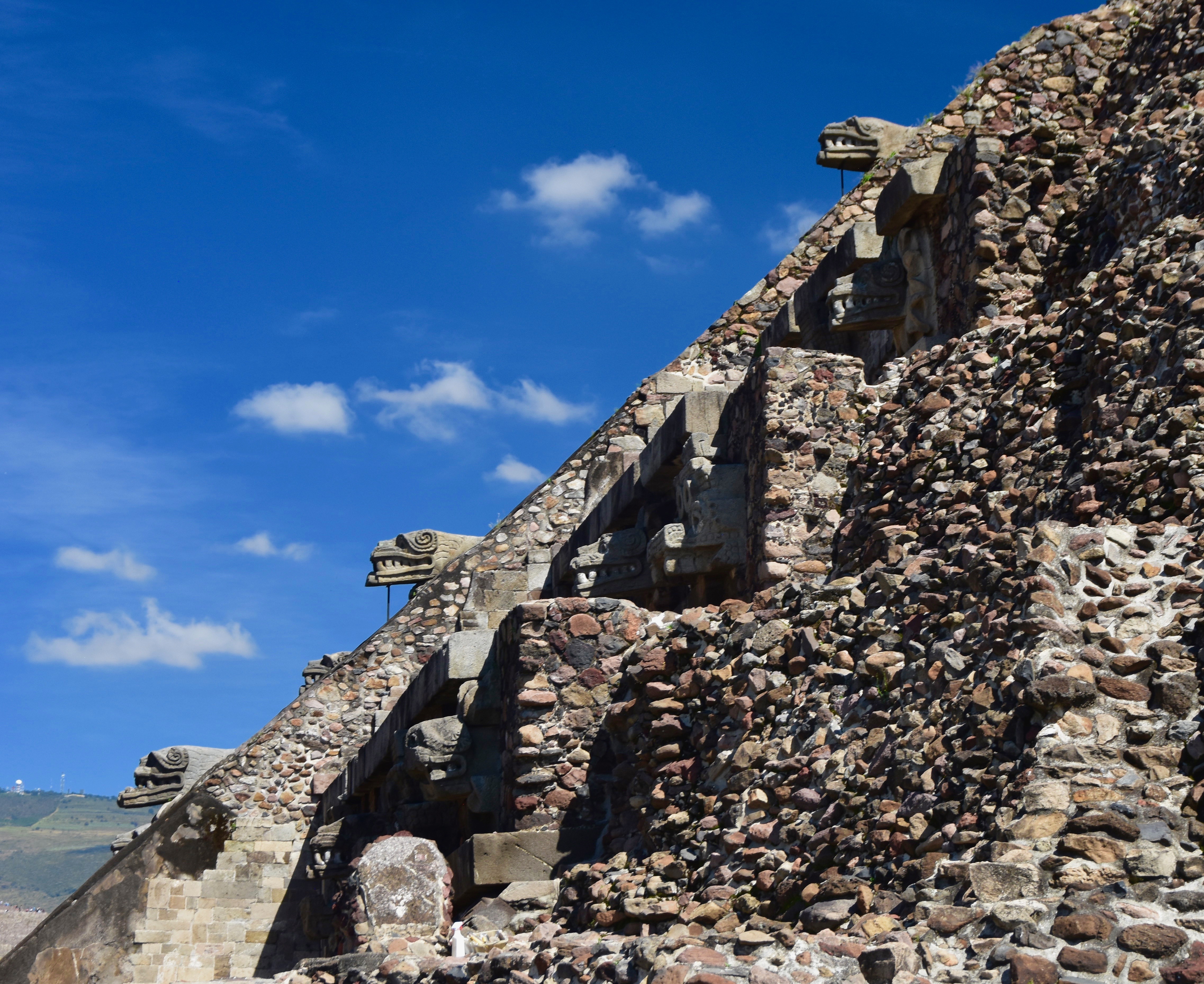
What is most intriguing about this pyramid, which is nowhere near as grand as the other two, is that this may very well be where the worship of Queztalcoatl, which became so central to the Mexica religion and myths, first began. You can also see that it’s in pretty poor shape and in 1984 was added to the World Monuments Watch List. That was the same year that St. John’s Anglican church, in Peggy’s Cove (mistakenly identified as Lunenburg on the website), the most beautiful example of Carpenter Gothic in my home province of Nova Scotia and not twenty minutes from where I live, was added. So we Canadians have nothing to be smug about when other country’s are accused of letting important monuments deteriorate.
Patio of the Pilares (Pillars)

At one time there were hundreds of grand houses in Teotihuacán, but today only a few remain that have been at least partially reconstructed. One such is the Patio of the Pilares or Pillars which contains a great collection of both painted murals and incised portraits of animals and gods. The precise meaning of these is not known – who knows? Maybe it was like Freud’s “Sometimes a cigar is just a cigar.” and they were purely decorative with no greater meaning than giving visual pleasure, like this owl.
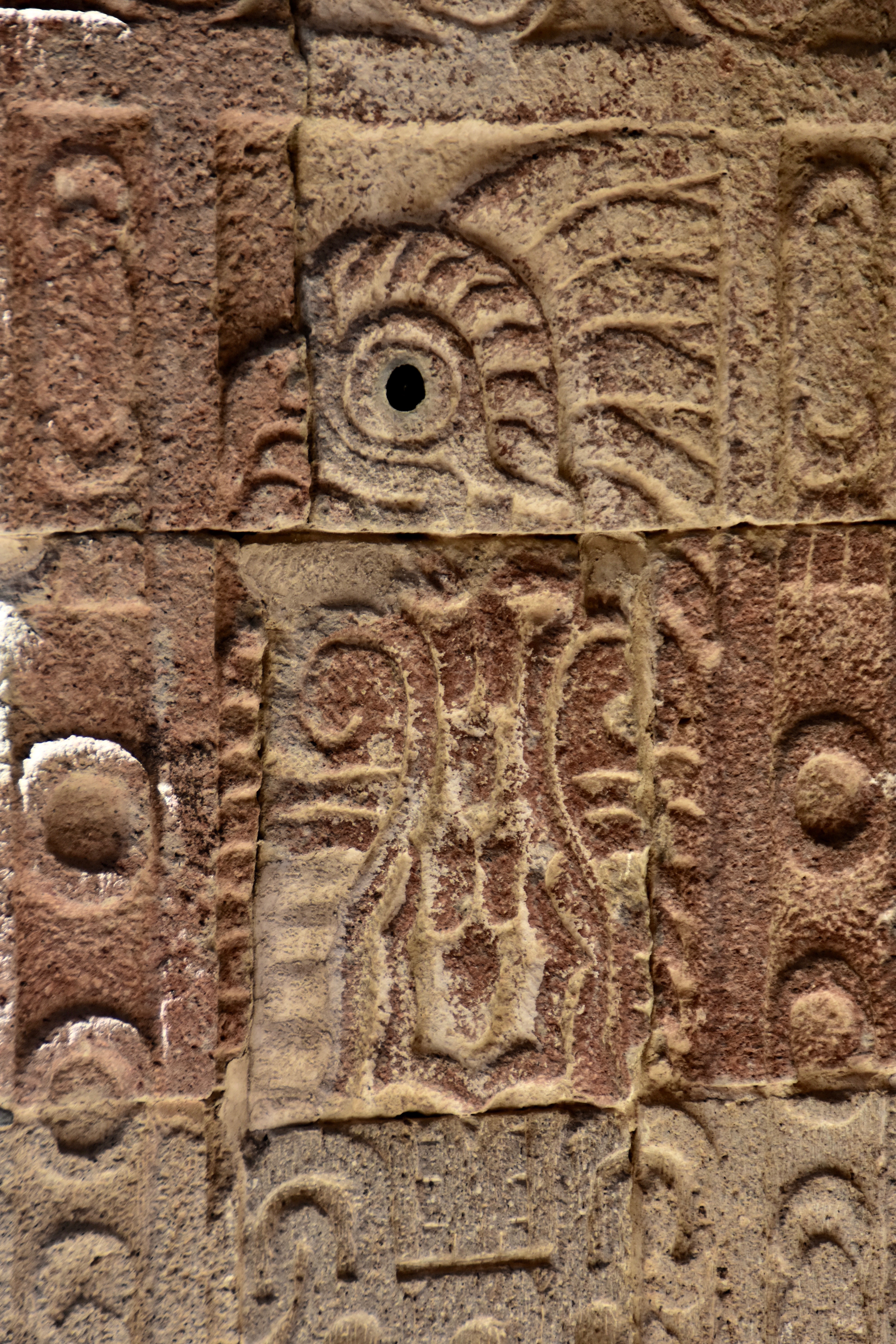
Or this painted parakeet, still remarkably sharp after almost 2,000 years.
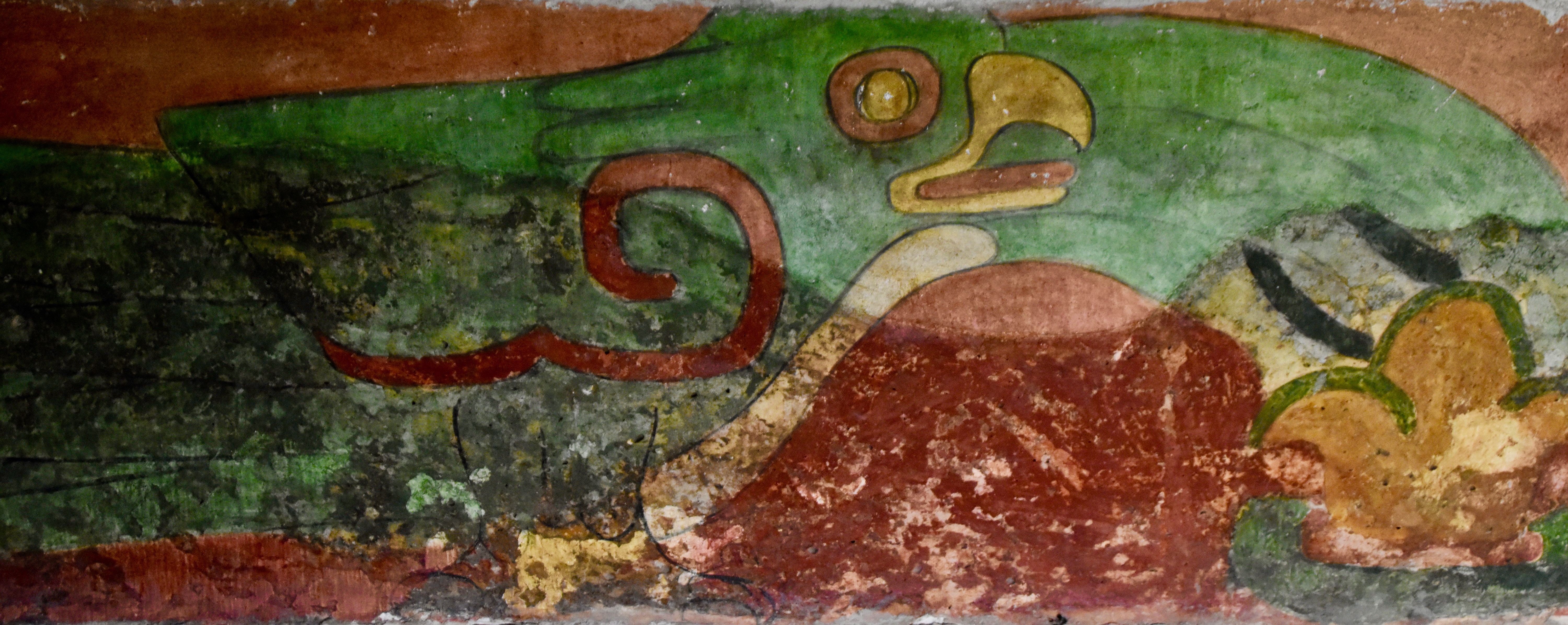
Pyramid of the Moon

This is a wide angle shot of the north end of the Avenue of the Dead with the Plaza of the Moon ending at the Pyramid of the Moon and a number of lesser pyramids around the plaza. Like many Meso-American pyramids, it was built over the top of an older, smaller one, in this case starting in about 200 A.D. and comprising six more expansions to the finished product in about 450A.D.
If you look at the photo of the Avenue of the Dead in this post you will see that the Pyramid of the Moon has the Cerro Gordo mountain behind it and appears very similar in profile. This is thought to be deliberate and not coincidental. Although you can climb the Pyramid of the Moon, that climb would end at the large altar on which you can see many people standing. Everything above that is off limits.
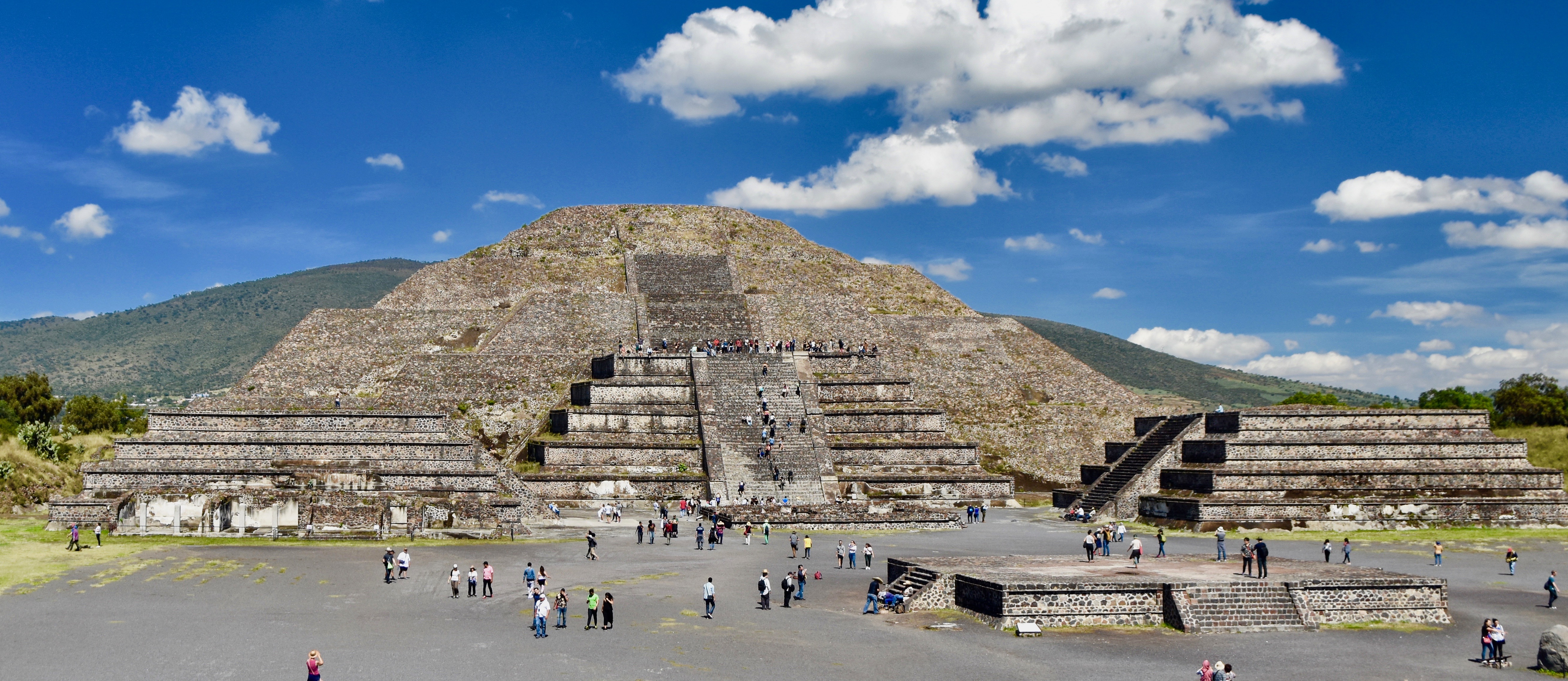
The primary function of the Pyramid of the Moon was religious. This is where sacrifices, human and animals of many species were dedicated to the ‘Great Goddess’.
If this was the only pyramid at Teotihuacán it would still be a world class tourist attraction, but there’s an even bigger one and I’ve saved the best for last.
The Pyramid of the Sun, Teotihuacan
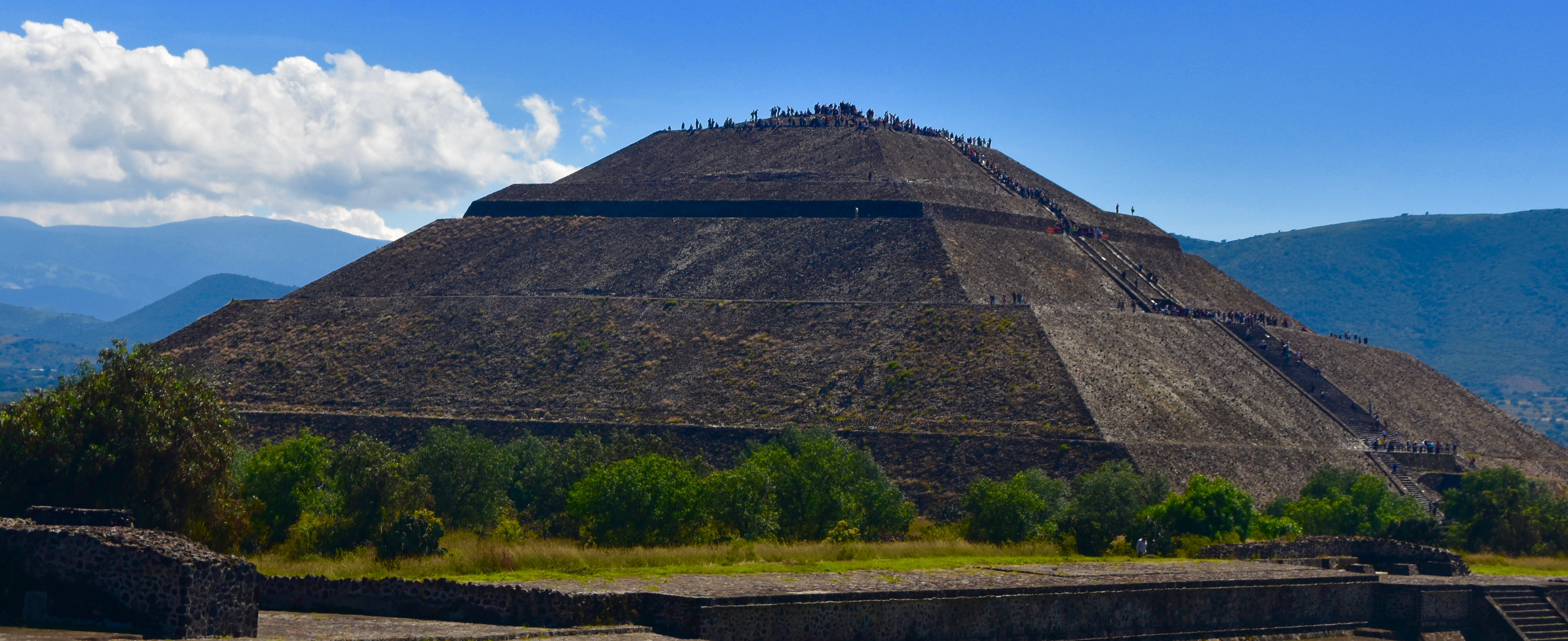
The Pyramid of the Sun is big. It’s base is a perfect square of 220 metres (720 feet) per side and its 66 metres (216 feet) high with a set of stairs going right to the top. It’s the largest pyramid in the world that anyone who’s fit and not afraid of heights, can climb. Underneath it is an opening that might or might not be man made according to who you listen to. Some think it was a cave to a natural lava tube that gave rise to the belief it was Chicomoztoc, the place where life began, although there are other claimants for this site in Mexico. Others think it was man made and was probably a tomb that was robbed long before it was rediscovered. For such a big place, surprisingly few artifacts have been found within its walls, unlike the other two large ones.
However, the other two can’t compete for the sheer excitement of climbing the damned thing. It’s something I’ve wanted to do for over fifty years and now I’ll find out if my legs and lungs are up for it. Victor says we have half an hour to get up and back which winnows the field of keen climbers to about five.
Here’s what you’ll face looking up from the bottom. There are three levels you can call it quits on before reaching the top. I hope I don’t succumb to the temptation.
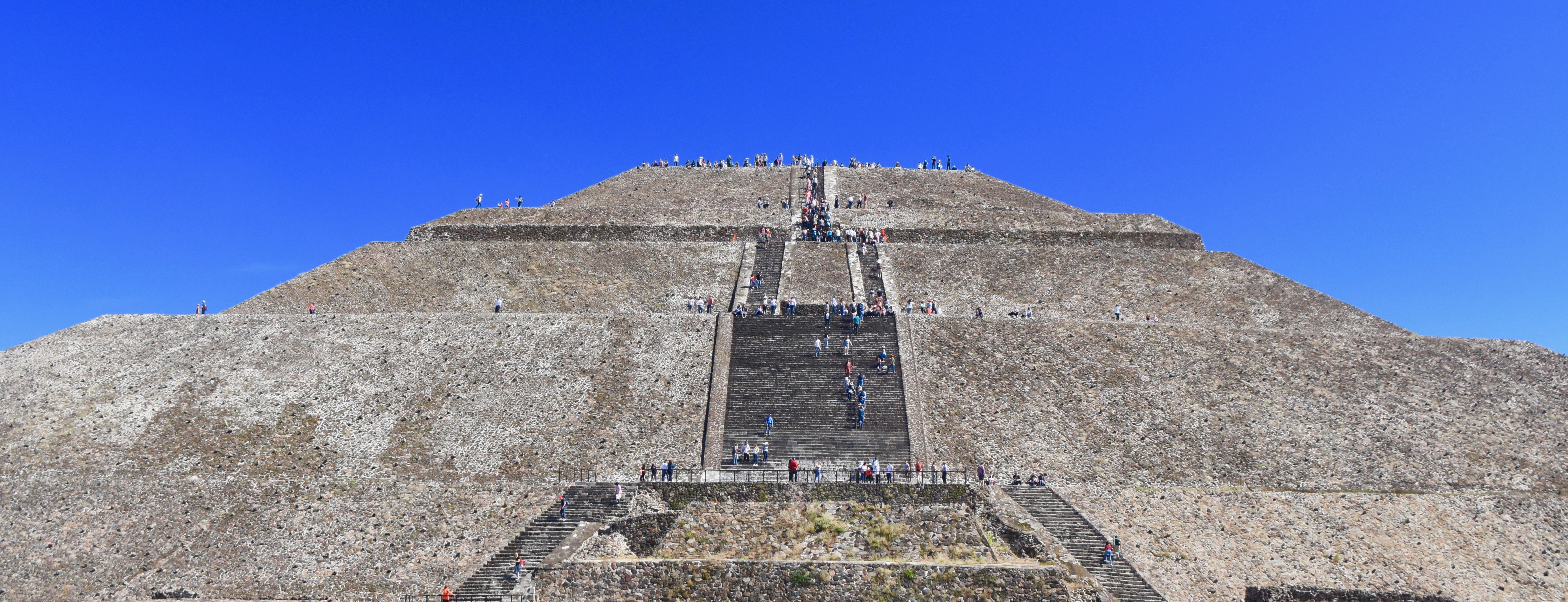
Okay, I’ve made it past the first level and am halfway up the second, but I don’t have time to take a breather.
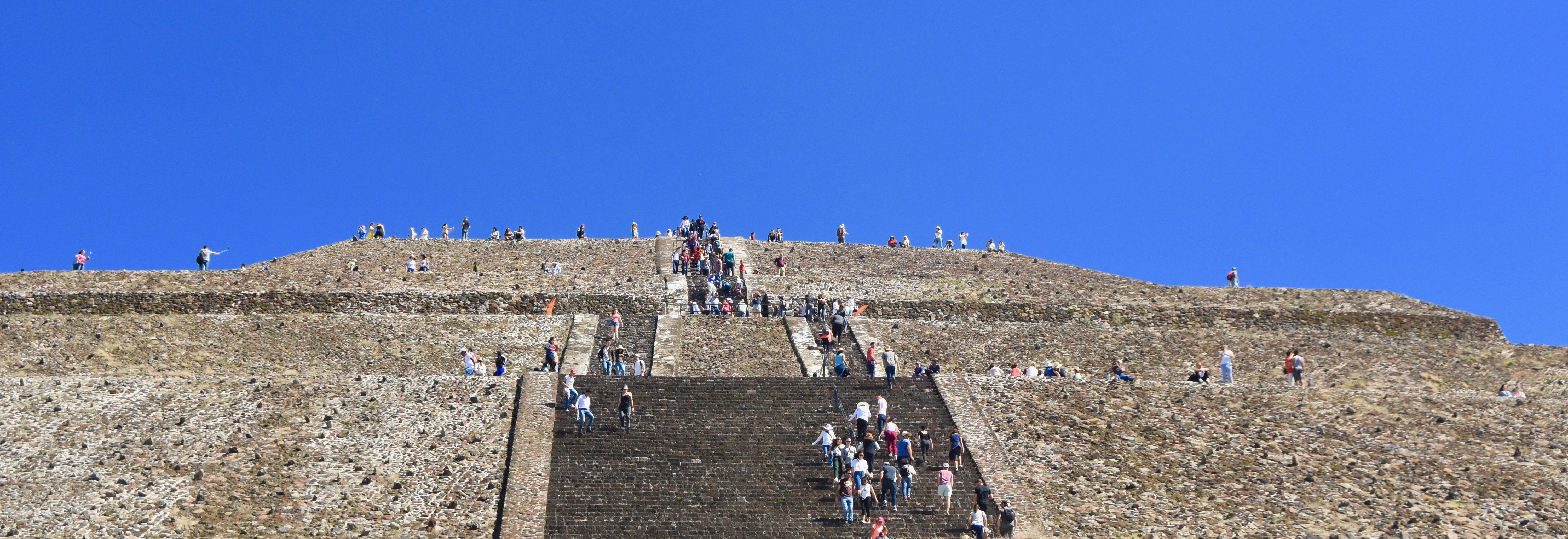
I’ve reached the third level and I can see the people on top. This is what the Pyramid of the Sun looks like close to the top.
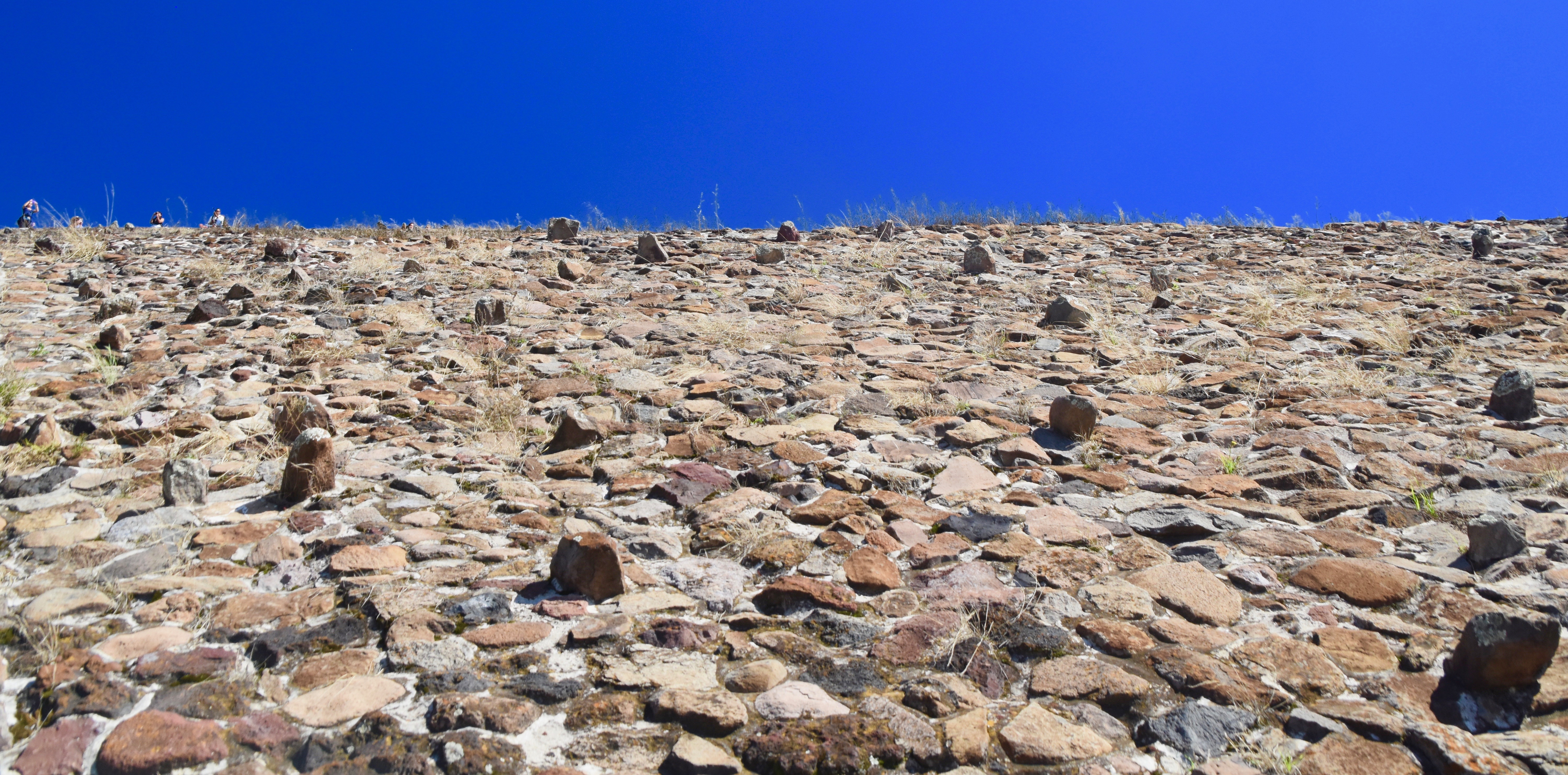
Almost there. A lot of people panting like parched dogs.
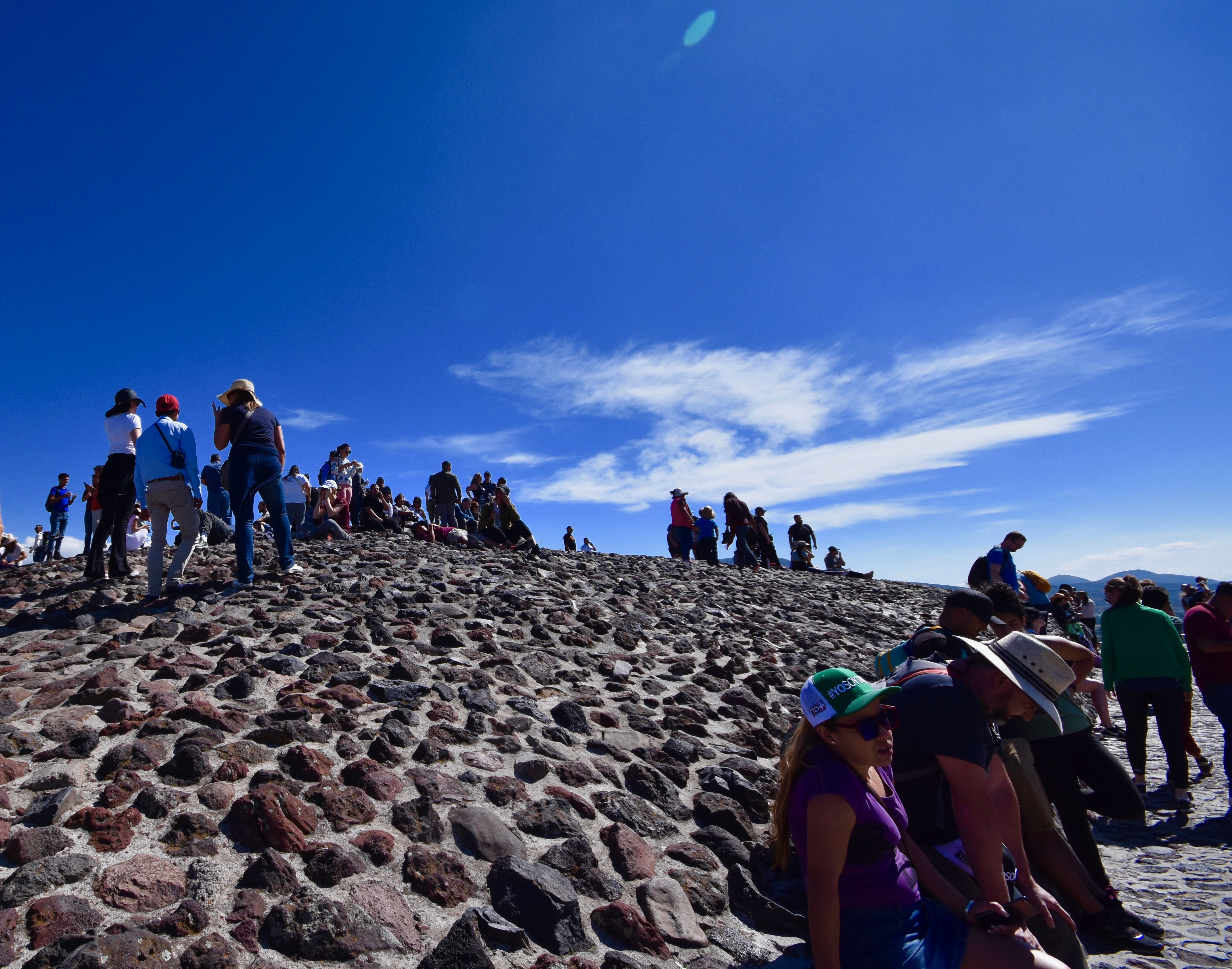
Success! What a view!

The Pyramid of the Moon looks like a midget from up here and the people like veritable ants. Time for just a few wide-angle shots.
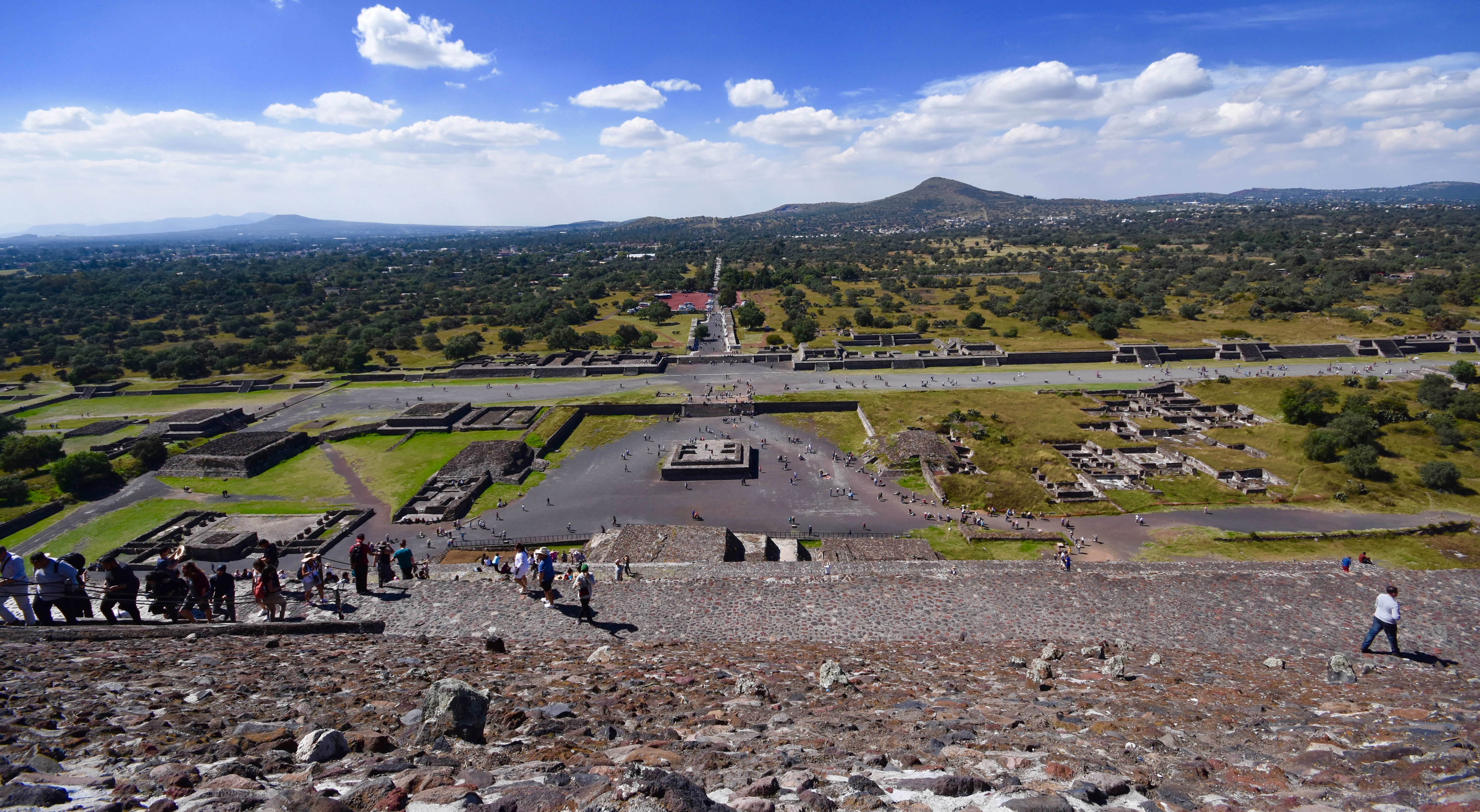
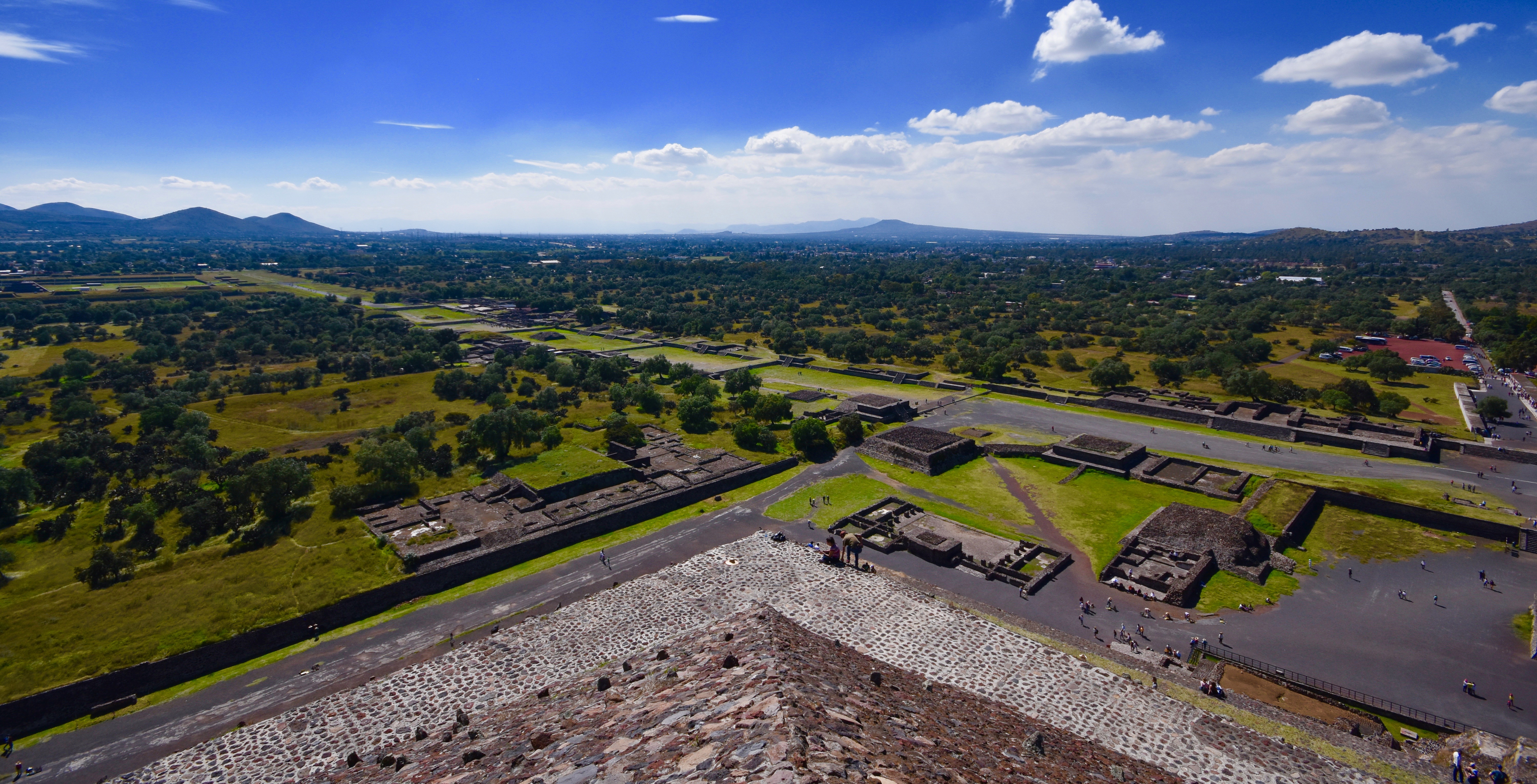
Time to get going. I didn’t realize how steep the climb really was until looking down, just like looking down from the top of a double black ski trail is way scarier than looking up at it.
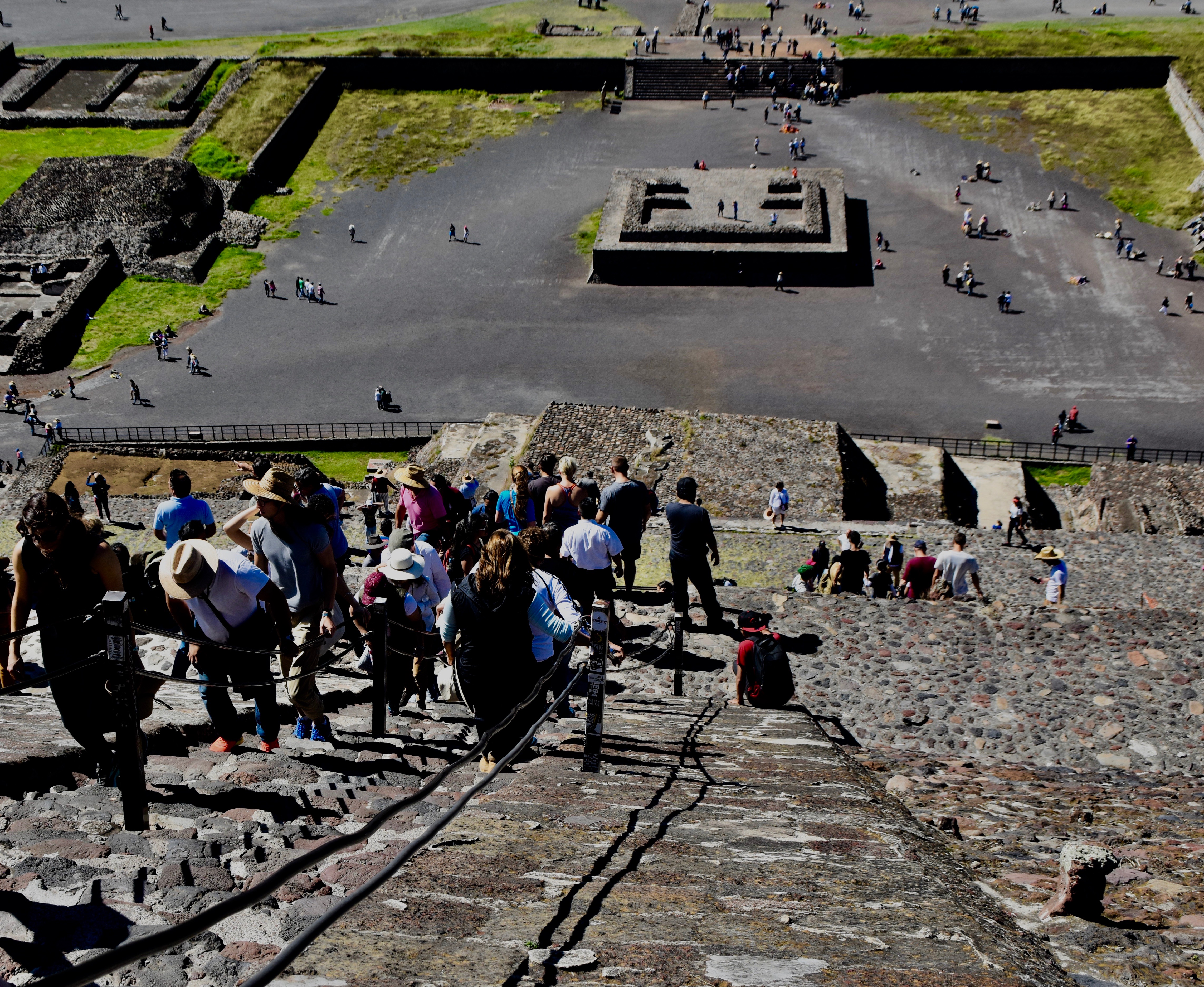
I make it back just in time and find I’m the only one who made it to the top. BFD I’m sure you’re thinking and probably rightly so, but it was something I’ve always wanted to do and I’m glad I made it. Thanks Victor and Adventures Abroad for the window of opportunity. I would have been really disappointed if I had not been given at least a chance to do this.
Los Voladores
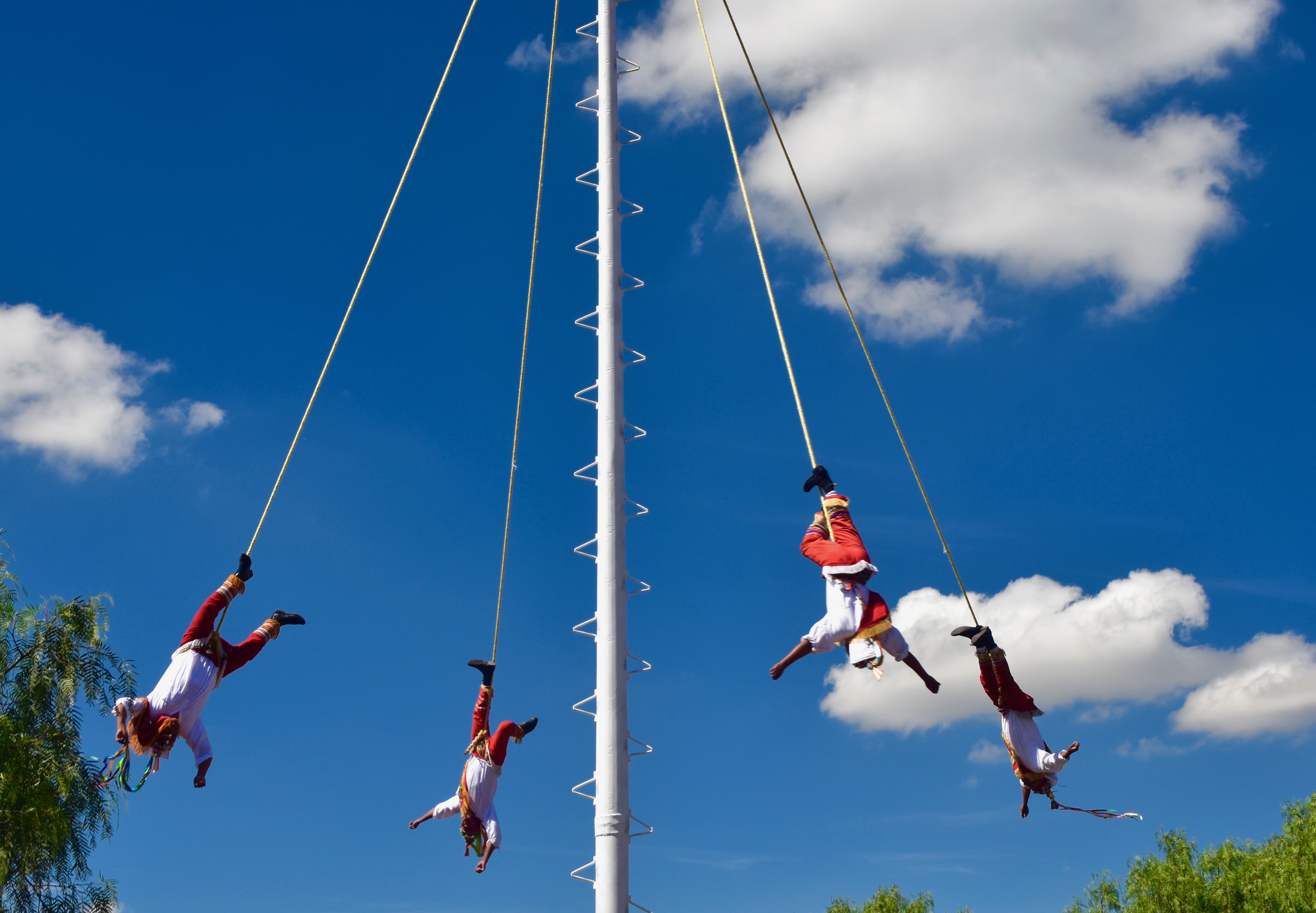
Victor had a nice surprise waiting for us as we headed back to the bus. La Danza de los voladores or the ‘Dance of the Flyers’ is a traditional ritual for lack of a better word that dates back well before Colonial times and is associated most closely with a prayer for rain. However, it’s so darn pretty to watch that it is now a spectacle put on for tourists. Enjoy the show and I hope you’ll join me at our next stop in Tula, capital of the Toltec Empire.

